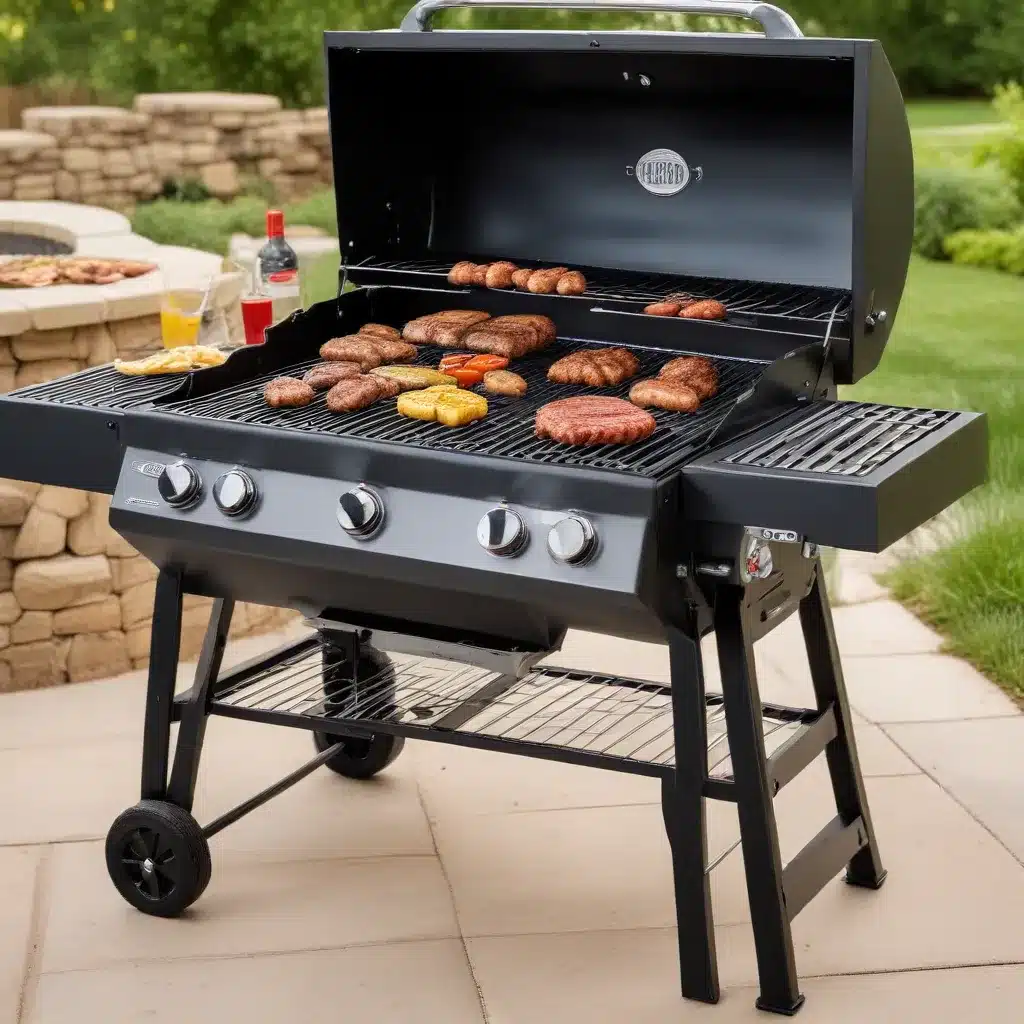
The Charcoal Debate: Tradition, Flavor, and Control
As an experienced barbecue pitmaster, I’ve had the pleasure of exploring the nuances of both gas and charcoal grilling. While the convenience of a gas grill is undeniable, there’s just something about the ritual and flavor of cooking over charcoal that truly speaks to the heart of the backyard BBQ enthusiast in me.
You see, when it comes to charcoal grilling, it’s not just about the heat – it’s about the experience. There’s a certain meditative quality to carefully arranging the coals, tending to the flames, and coaxing out that perfect smoky aroma. It’s a dance that requires patience, skill, and a deep appreciation for the craft.
One of the biggest advantages of charcoal grilling is the control it offers. With a gas grill, you’re often at the mercy of the pre-set temperature settings. But with charcoal, you can fine-tune the heat, add wood chips for flavor, and really dial in the perfect cooking environment for your specific dish. Want a blazing-hot sear on your steaks? Easy. Craving that low-and-slow smoked brisket? No problem.
And let’s not forget the flavor factor. There’s just something about that smoky, caramelized crust that you simply can’t replicate with a gas grill. The charcoal itself imparts a depth of flavor that gas simply can’t match, and when you add in the ability to incorporate wood chips or chunks, the flavor possibilities are endless.
The Gas Grill Advantage: Convenience and Precision
Now, I’m not going to pretend that gas grills don’t have their own set of advantages. For the busy backyard chef who values convenience, a gas grill can be a real game-changer. With the simple push of a button, you can have your grill heated and ready to go in no time. No messing with charcoal, no waiting for the coals to reach the optimal temperature – it’s a true time-saver.
And when it comes to precision, gas grills often have the upper hand. Many models now come equipped with sophisticated temperature controls, allowing you to dial in the exact heat you need for your culinary creations. This can be particularly useful for more delicate items like fish or vegetables, where temperature management is critical.
Furthermore, gas grills tend to be a bit easier to clean and maintain than their charcoal counterparts. No more dealing with ash or spent charcoal – a quick wipe-down and you’re good to go for your next grilling session.
The Hybrid Approach: Combining the Best of Both Worlds
Of course, the age-old debate of gas vs. charcoal doesn’t have to be an either/or scenario. Many backyard chefs, myself included, have found a happy medium by embracing a hybrid approach that combines the convenience of gas with the unparalleled flavor of charcoal.
Here’s how it works: you start with a gas grill, but you incorporate a small charcoal tray or smoker box into the design. This allows you to enjoy the ease of gas-powered cooking while still benefiting from the smoky goodness of charcoal. You can even experiment with different wood chips or chunks to infuse your dishes with unique flavor profiles.
The hybrid approach gives you the best of both worlds – the speed and temperature control of gas, with the rich, authentic taste of charcoal-fired barbecue. It’s a surefire way to impress your family and friends at your next backyard BBQ showdown.
Mastering the Art of Charcoal Grilling
Of course, if you’re a die-hard charcoal enthusiast like myself, there are a few key techniques and tips you’ll want to master to truly elevate your backyard BBQ game.
First and foremost, it’s crucial to understand the importance of proper charcoal management. Arranging the coals in the right configuration, allowing them to reach the perfect temperature, and regulating the airflow are all essential skills. Experiment with different charcoal types, from traditional lump charcoal to briquettes, and find the one that best suits your preferred cooking style.
Another crucial factor is the selection and use of wood chips or chunks. Different wood varieties, such as oak, hickory, or apple, can impart wildly different flavor profiles to your grilled meats and vegetables. Experiment with different combinations and find the ones that truly excite your taste buds.
And let’s not forget the importance of temperature control. While gas grills often have precise temperature readouts, charcoal cooking requires a bit more finesse. Learn to read the subtle visual cues, such as the color and behavior of the flames, to ensure you’re maintaining the perfect cooking environment.
Embracing the Backyard BBQ Lifestyle
At the end of the day, whether you’re a gas grill devotee or a charcoal purist, the true joy of backyard barbecuing lies in the experience itself. It’s about gathering your friends and family, sharing stories, and creating memories around the smoky aroma of perfectly cooked meats and vegetables.
As a veteran pitmaster, I’ve had the privilege of competing in countless barbecue competitions and hosting countless backyard BBQ gatherings. And through it all, I’ve come to appreciate the unique charms and challenges of both gas and charcoal grilling.
Ultimately, the choice between gas and charcoal is a personal one, and it often comes down to your individual preferences, cooking style, and the type of dishes you enjoy preparing. But regardless of your preference, the true joy of backyard barbecuing lies in the journey – the ritual, the flavors, and the camaraderie that come with the territory.
So, whether you’re a gas grill enthusiast or a charcoal diehard, embrace the backyard BBQ lifestyle and let your passion for great food and good company shine through. After all, at the end of the day, the real win is in the memories you create and the connections you forge around the grill.
And if you’re ever in the mood for some truly exceptional barbecue, be sure to stop by Creekside BBQ – we’ll be more than happy to share our expertise and showcase the best of both the gas and charcoal worlds.

